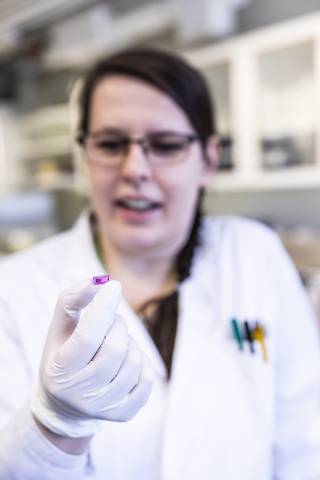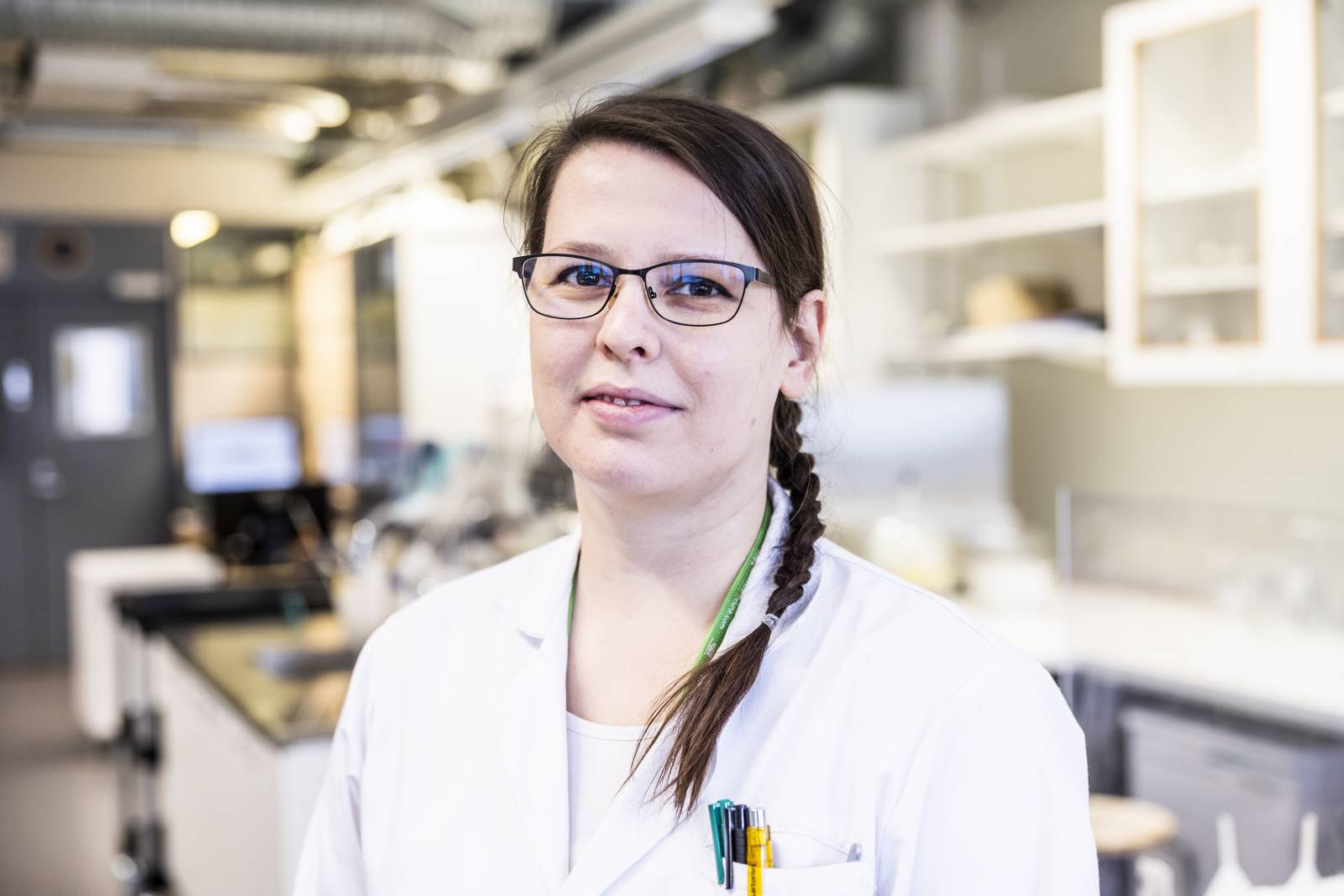Text: Miina Björninen
Photos: Jonne Renvall
“I would not do anything else” – Christine Gering says promptly when asked why she chose research path. The freedom to explore science has always attracted her, no matter what the topic. Gering studied chemistry during her bachelor in Berlin and tested some courses form polymer major. She also interned in Fraunhofer institute researching hydrogels. Gering had the passion to explore more and applied to study major in several universities – all of which she was accepted to. “Family connection to Finland made me do the final choice”, she recalls.
Consequences and people lead to biomaterials science
Gering embarked in four years of master’s studies in polymeric materials and ended up on Nina Ahola’s biomaterials course. By the time she needed to find master’s thesis topic she was already drawn to biomaterials and referred to Professor Minna Kellomäki’s Biomaterials and Tissue Engineering Group. Kellomäki appointed her to be Doctor Janne Koivisto’s student, and at that, Gering was back in working with hydrogels and playing with chemistry. Gering had found the topic, or the topic had found Gering, for the aspired research career.
Becoming the PhD researcher
After master’s, Gering continued her research as a project researcher. “It was very difficult to find funding just for projects independent of PhD research. The funding scheme really pushes researchers to embark on a PhD whether they want it or not.”
She finally got funded by Wihuri Foundation and was nearly simultaneously accepted for the Doctoral School of Tampere University. Her PhD was financially backed up.
A hydrogel from food industry tuned into a growth material for cells
Gering delved into the world of biomedical hydrogels. “In a nutshell, my PhD was to explore the “tools” to modify hydrogels to make them more bioactive.” In biomaterials world, increased bioactivity often means increased interaction with cells or tissues. Gering used gellan gum as an example hydrogel, it’s a commonly used hydrogel in food industry. “It’s a great material, cost efficient, non-animal origin, transparent and inherently bioinert, which makes it an intriguing material for cells to grow once bioactivated.”

Learnings
What was the hardest thing doing PhD? “It was really hard to initiate writing reports – opening the white document”, Gering sighs showing a glimpse of a perfectionist in her. She also needed to adjust the expectations of just being able to explore science during the PhD work. “I was kind of disappointed first that I just couldn’t do my own stuff. But then again, I would have probably side-tracked!” She laughs. “Postdoc time is a better place to do the exploring bit”, she admits.
Not surprisingly, Gering will continue the research path. She starts the journey in Kellomäki’s group as a postdoc while looking for interesting postdoc positions in Europe.
Message to the future PhD researchers
“You’ll start with a lot of motivation, which you’ll lose on the way while facing the tedious and stressful bits of the research life. Write your motivation down before you start.” Gering advises. “While facing the hard times, it’s good to recall why you were here in the first place”
“Okay, and also tie your hair down and make good lab notes”, she grins. Seems that she still knows she’s in the right place.
Learn more about Gering’s doctoral dissertation and find details for following her defense here.

